Table of Contents
If you wonder whether Iron a Mineral or Rock, here is your answer: IRON IS A ELEMENT! found IN ROCKS AND MINERALS. When heated before the blowpipe some of the ores are infusible, while most become, if not naturally so, attractable by the magnet. When the test is not destroyed by the presence of other metals, iron in a mineral when heated with borax on a platinum wire in the inner flame produces a bottle-green glass ; in the outer, a dark red, when hot; a light red, when cold.
Iron Pyrites
- Crystallization—usually cubical; also octahedral.
- Lustre—frequently bright metallic.
- Colour—yellow of different shades.
- Streak—brownish black.
- H.—6 to 6·5 ; S.G.—4·5 to 5.
- Composition—about half iron and half sulphur.
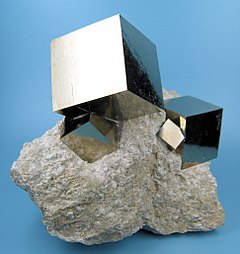
Strikes fire with steel, and has slightly peculiar smell when broken. If heated before B.F., sulphur fumes are given off, and eventually a globule of metal, attractable by the magnet, is obtained. The powder of iron pyrites is very slowly soluble in nitric acid. This ore carries gold in either a small or great quantity, and is generally to be found in gold-bearing and other lodes, oxide of iron, colouring the quartz brownish, representing at the surface the decomposed iron pyrites such as exists in the vein deeper down.
The mineral is often mistaken for copper pyrites and sometimes for gold, but its being too hard to be cut by a knife is a distinguishing test. Iron pyrites is not employed for the extraction of iron; it is the chief mineral, however, from which sulphuric acid is obtained. In Spain are very rich deposits from which most of the ore brought to England is mined, although the Coal measures of this country are productive.
Magnetic Pyrites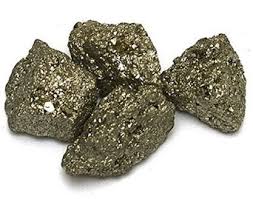
- Crystallization—hexagonal prisms, &c.
- Colour—between copper red and yellow, inclining to bronze.
- Streak—greyish black.
- H.— 3·5 ; S.G.—4·4 to 4·6.
- Composition—about 60 per cent, iron, the rest sulphur.
In the outer B.F. on charcoal, a red oxide of iron globule is formed; in the inner flame, fuses and yields a black magnetic globule having a yellowish fracture. It is not so hard as iron pyrites, and is slightly attracted by the magnet.
Arsenical Pyrites mispickel
often called mundic by miners in Cornwall and Devonshire
- Crystallization—rhombic prisms modified on the angles.
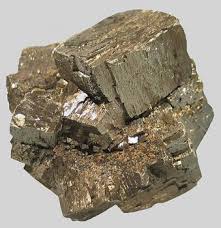
- Colour—silver white.
- Streak—greyish black.
- Lustre—shining.
- H.—5·5 to 6; S.G.—6·3.
- Composition—-about 35 per cent, iron, the rest arsenic and sulphur; cobalt sometimes occurs in the ore.
Before B.F. a magnetic globule is obtained, and a smell of garlic noticed. Strikes fire with steel, and a decided odour of garlic noticed. Heated in a tube a sublimate is obtained.
Specular Iron (haematite)
- Crystallization—rhombohedral; some crystals are thin hexagonal tables with oblique edges.
- Colour—dark steel grey in some varieties, but red in some earthy ones.
- Streak—powder invariably dark cherry red.
- H.—5·5 ; S.G.—4·5 to 5·3.
- Composition—70 per cent, iron, the rest oxygen.
Infusible before B.F., but with borax gives a yellow glass in the outer flame, a green glass in the inner flame.
Varieties of Specular Iron ore
- Specular iron—of a metallic lustre.
- Red haematite—an opaque mineral, not of a metallic lustre, brownish or red in colour. Has a radiated structure.
- Red ochre and red chalk—soft and earthy, generally containing a quantity of clay.
- Jaspery clay iron—clay ironstone.
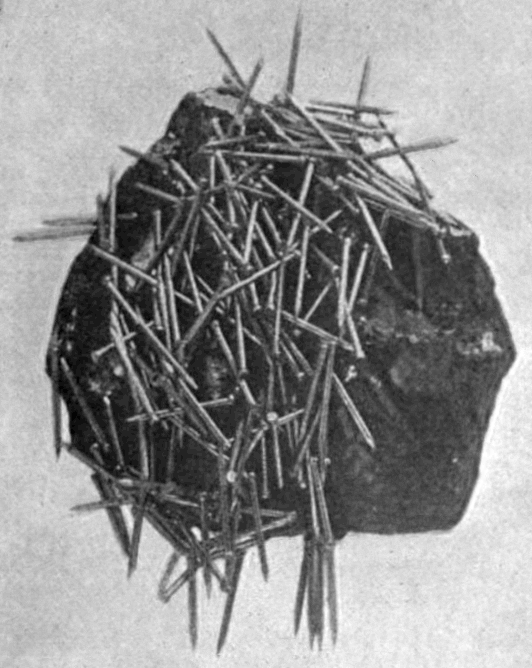
- Micaceous iron ore (a scaly variety) is used as the basis for a certain kind of paint.
Magnetic Iron Ore (loadstone)
- Colour—dark iron grey with metallic lustre.
- Streak—black.
- Structure—brittle.
- H.—5·5 to 6·5; S.G.—5 to 5·1.
- Composition per cent.—peroxide of iron, 69 ; protoxide of iron, 31.
Infusible before B.F. Yields bottle-green glass when heated with borax in inner flame. If powdered, the iron can be separated from impurities by the magnet. Not acted on by nitric acid; but when powdered is soluble in hydrochloric acid. Masses of specular iron ore and magnetic iron may sometimes be mistaken for one another; the difference of streaks easily distinguishes them. This ore is the most important in the north of Europe.
Brown Iron Ore (limonite)
- Sometimes earthy. Massive, with botryoidal and smooth surface.
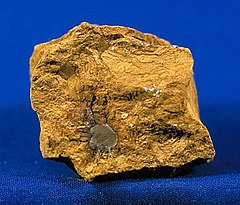
- Structure—fibrous.
- Colour—brownish yellow and coffee colour.
- Streak—yellowish.
- Lustre—dull or submetallic.
- H.—5 to 5·5 ; S.G.—3·6 to 4. .
- Composition—85 per cent, of iron peroxide, of which seven-tenths is pure iron.
- Before B.F. blackens and becomes magnetic. Gives bottle-green glass in the inner flame when heated with borax.
Varieties of IRON MINERALS
- Brown haematite—Botryoidal, stalactitic.
- Yellow and brown ochre—Earthy.
- Bog iron ore—Of a loose, friable texture. Found as a black or brownish earth in low swampy ground.
- Brown or yellow ironstone—Hard and compact.
Franklinite ( an American ore)
- Colour—dark black.

- Streak— dark brown.
- Structure—brittle.
- Composition—66 per cent, peroxide of iron, manganese, and zinc.
- In appearance is something like magnetic iron, but less metallic.
Copperas (green vitriol)
- Colour—greenish white.
- Lustre—glassy and sub transparent.
- Structure—brittle.
- Contains 25 per cent, of oxide of iron, also sulphur and water.
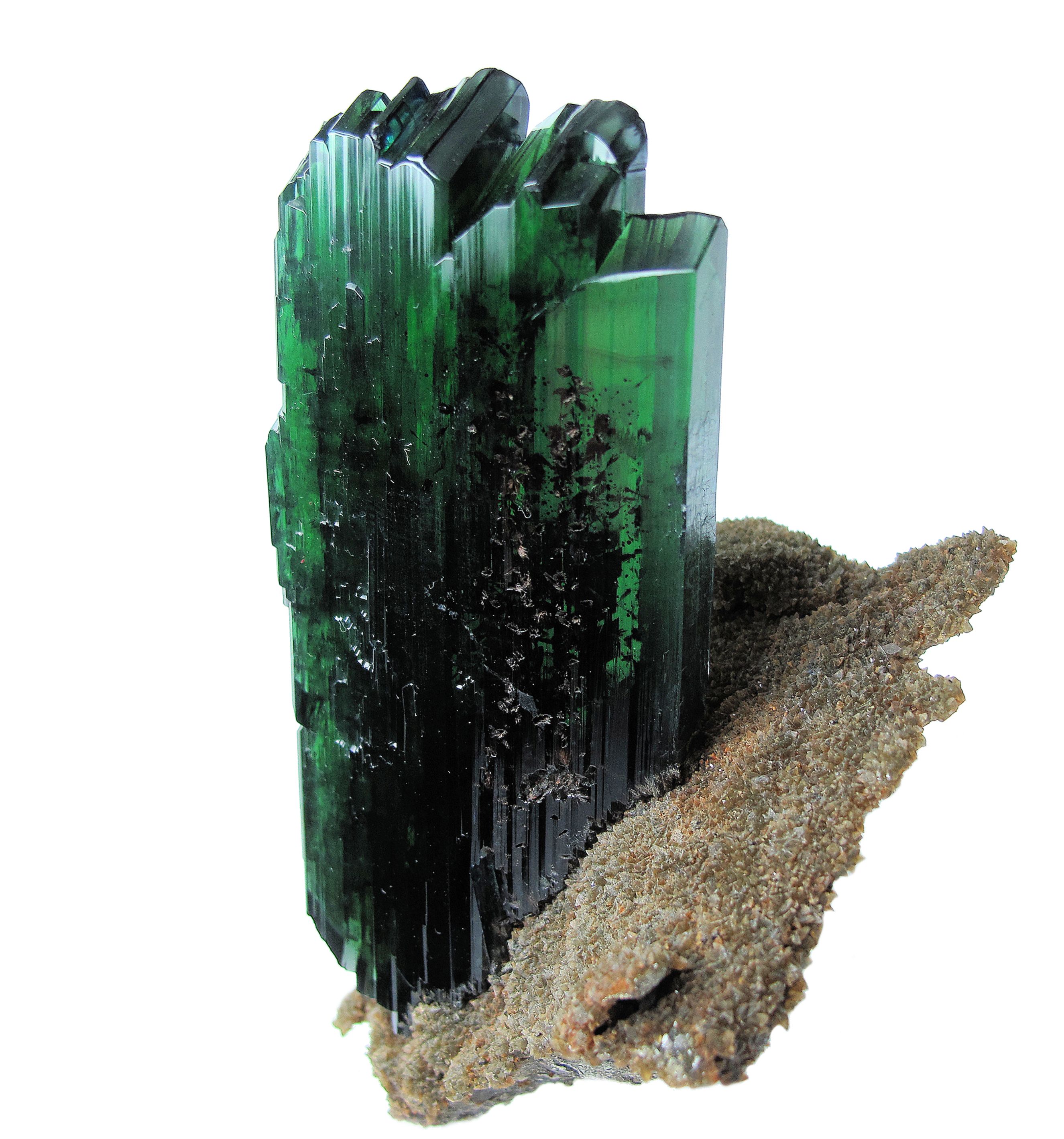
- It is formed by the decomposition of iron pyrites.
Vivianite
- Crystallization—oblique prisms.
- Lustre—pearly or glassy.
- Colour—deep blue to green.
- Streak—blue.
- H.—1·5 to 2; S.G.—2·6.
- Composition—42 per cent, protoxide of iron, phosphoric acid, and water.
- Becomes opaque before the blowpipe.
Spathic Iron (iron spar, carbonate of iron)
- Sometimes massive, with a crystalline structure
- Crystallization—hexagonal, rhombohedral &c.
- Lustre—glassy or pearly.
- Colour—yellowish grey to rust colour; becomes brownish red to black on exposure.
- Streak—uncoloured.
- H.—3 to 4·5; S.G.- 3·7.
- Composition—62 per cent, of protoxide of iron, carbonic acid.
Before B.F. it blackens and becomes magnetic. Colours borax green. Dissolves in nitric acid, but, though a carbonate, does not effervesce much, unless in a powdered state. Heated in a closed tube, often decrepitates, and turns black and magnetic. Clay ironstone of the Black Band seam is an impure variety.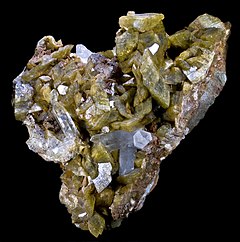
The oxides and carbonates of iron are the principal ores, and their gangues are calcareous, argillaceous, siliceous, or bituminous, their value depending in a certain degree on the associated minerals. Thus :—In spathic ores, 5 to 15 per cent, of manganese or carbonaceous matter in a clay stone is an advantage ; whereas some iron ores are decreased in worth by being associated with iron pyrites.
Magnetic iron ore occurs in granite, gneiss, schist rocks, clay slate, and limestone.
Remarkable deposits of red haematite occur in Carboniferous, Cambrian, Silurian, and Devonian rocks. In Cumberland, North Lancashire, and Wales, veins run north and south in mountain limestone. Brown iron ore deposits occur in Carboniferous Limestone and Lower Coal measures in several places in England and Wales , also in the Lias, Oolite, and Lower Greensand of some places. In Spain brown haematite is found in a cretaceous formation. Spathic ores occur in carboniferous rocks, as well as in Devonian and older rocks. Clay ironstone is found in shales and clays of the Coal measures, also in Lias formation.
The Titaniferous iron ore, sometimes massive, but usually in the form of dark black sand washed down from the rocks in the country around, is very plentiful in some parts of North America, New Zealand, &c., and is often associated with gold, gems, heavy metallic compounds, &c. Unfortunately the ore is rather refractory. It can be distinguished from specular iron (for which it might be mistaken) by its black streak.
